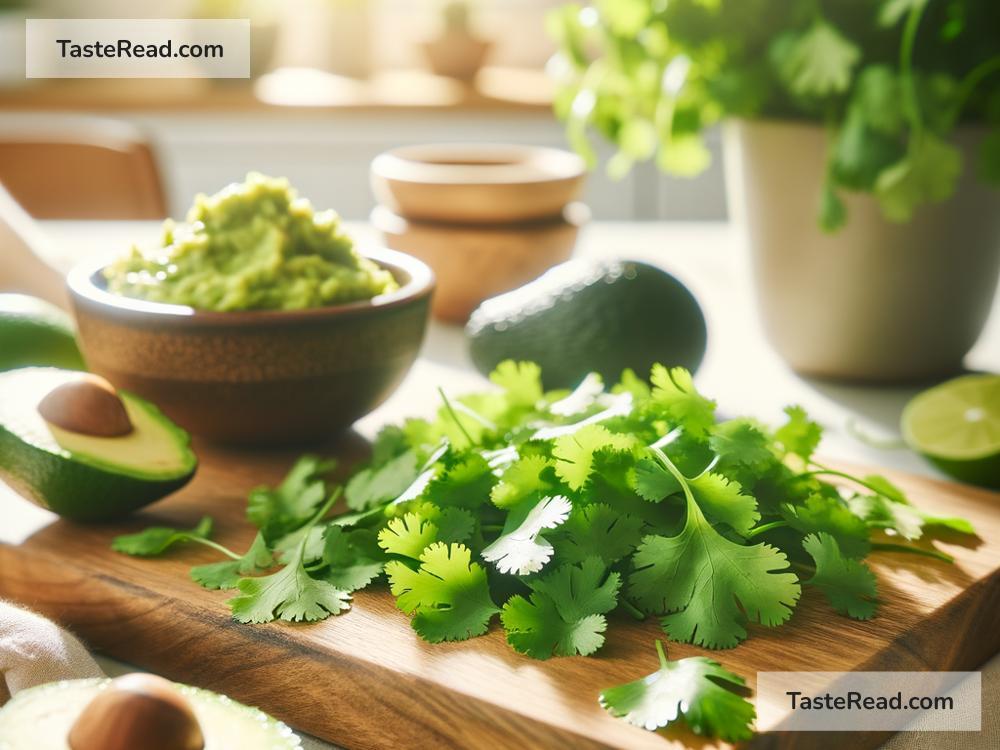Why Cilantro Divides People with Its Flavor
Cilantro, also known as coriander in some parts of the world, is a popular herb used in many cuisines, including Mexican, Indian, Thai, and Middle Eastern dishes. Its bright green leaves have a distinctive aroma and taste, and it’s often sprinkled on tacos, curries, soups, and salads. While many people love cilantro and find that it adds a fresh, citrusy kick to their food, others strongly dislike it and think it tastes like soap. This divide can be intense—some people feel so passionately about their hatred of cilantro that they join online groups to discuss it. So, what is it about cilantro that makes people react so differently? Let’s dive into the reasons behind this polarizing herb.
The Science Behind Cilantro’s “Soapy” Taste
The primary reason cilantro triggers strong reactions comes down to genetics. Cilantro contains chemical compounds called aldehydes, which are also found in soaps and detergents. These compounds give cilantro its unique flavor and aroma. For most people, the aldehydes just contribute to the herb’s bright and citrus-like notes. However, around 4-14% of the population has a genetic variation that makes them highly sensitive to these aldehydes. When these individuals eat cilantro, their brains interpret the aldehydes as a taste commonly associated with soap.
This sensitivity is linked to a specific gene called OR6A2, which influences how people perceive the smell and taste of certain chemicals. People with this genetic variant tend to have a stronger aversion to cilantro, as their brains perceive the herb as unpleasant or even disgusting.
If cilantro tastes like soap to you, know that it’s not “all in your head”—it’s in your DNA. This innate reaction is why even the tiniest bit of cilantro can ruin a dish for someone with the genetic predisposition.
Cultural and Regional Differences in Cilantro Perception
Interestingly, cilantro is loved in many countries and cuisines around the world. It’s a staple in Mexican dishes like guacamole and salsa, adds flavor to Indian chutneys, and is commonly used as a garnish in Vietnamese pho or Thai curries. These cultures tend to use cilantro generously, and many of their cuisines have used it for centuries.
Experts believe that exposure to cilantro in food may influence how people feel about it. For example, if you grew up eating dishes with cilantro, your brain might associate the herb’s flavor with comfort, familiarity, and enjoyment. On the other hand, if you were introduced to cilantro later in life—or if you tried it and immediately noticed a “soapy” flavor—you might find yourself rejecting it altogether.
This difference in exposure partly explains why cilantro haters seem more common in certain parts of the world. In North America and Europe, cilantro wasn’t widely used in traditional cuisines until globalization brought popular dishes like tacos, curries, and banh mi to a broader audience. For some people encountering cilantro for the first time, their genetic predisposition may immediately lead them to dislike it.
Can You Learn to Love Cilantro?
If you’re someone who finds cilantro’s flavor off-putting, you might wonder if there’s any way to get used to it. The answer is: maybe. Some food scientists and researchers suggest that repeated exposure to cilantro can help you overcome your aversion. Over time, your brain may start to associate the herb with positive memories, delicious meals, and the flavors of the dish as a whole. Many people who initially dislike cilantro report that they’ve grown to tolerate—or even enjoy—it after eating it in small amounts within flavorful recipes.
If you want to give cilantro a chance, you could start by chopping it very finely and mixing it into dishes where its flavor can blend with other strong ingredients, like lime juice, garlic, or chili. Another trick is to crush cilantro leaves to release their oils before adding them to your food. Crushing the herb can break down the aldehydes and help minimize the soapy taste, making it more palatable for those sensitive to it.
Of course, not everyone will want to “train” themselves to enjoy cilantro, and that’s perfectly okay. Luckily, there are plenty of alternatives for dishes that traditionally include cilantro. Parsley, basil, mint, or even a combination of these herbs can provide similar freshness without triggering the soap-like flavor. If you don’t like cilantro, you’re certainly not alone—and there’s no shame in skipping it altogether.
The Beauty of Food Preferences
Ultimately, cilantro’s polarizing nature is a reminder of how unique our senses are. Something as small as a genetic variation can shape our preferences in food and even influence the way we interact with different cuisines. Whether you’re a cilantro lover or hater, food is a deeply personal experience, and our likes and dislikes often depend on our genetics, culture, and memories.
Next time you’re at a party or sharing a meal with friends, cilantro might come up as a fun topic of conversation. You’ll likely find people passionately defending their love for the herb while others express their distaste for its soapy taste—and both views are perfectly valid. Food is not just about flavors; it’s about exploring what makes us unique. And cilantro? Well, it’s just one more example of how fascinating our differences can be.


